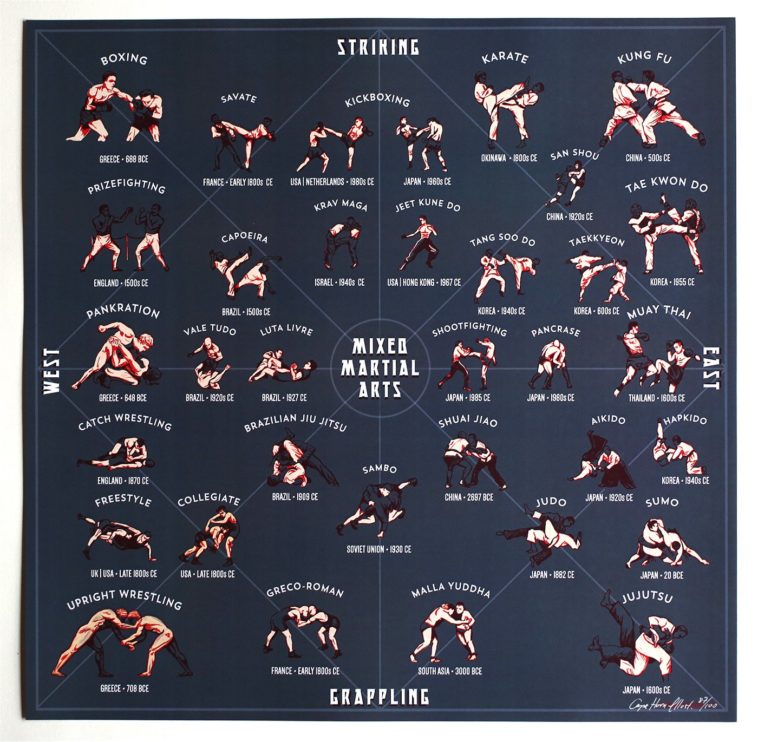Exactly How Do The Discipline-Centered Strategy Of Standard Martial Arts And The Competition-Driven Nature Of Contemporary Combat Sporting Activities Vary? Discover The Significant Differences That Can Form Your Experience
Exactly How Do The Discipline-Centered Strategy Of Standard Martial Arts And The Competition-Driven Nature Of Contemporary Combat Sporting Activities Vary? Discover The Significant Differences That Can Form Your Experience
Blog Article
Uploaded By-Ware Fink
When you consider martial arts, do you lean extra toward the standard methods or the modern combat sporting activities? Each path offers special advantages and experiences, shaped by their viewpoints and training approaches. Standard martial arts emphasize individual growth and technique, while modern battle sporting activities concentrate on competitors and performance. Comprehending these differences can lead you in picking the right strategy for your journey. But how do these differences show up in training and viewpoint?
The Ideology and Background Behind Standard Martial arts
While many people associate martial arts with physical combat, the ideology and history behind traditional martial arts run much deeper. You'll discover that these techniques stress individual growth, self-control, and regard.
Stemming from will martial arts help with soccer , conventional martial arts were commonly developed for Self-Defense and spiritual development. They embody concepts such as balance, harmony, and self-constraint, assisting professionals beyond mere battling abilities.
As you train, you'll not just learn techniques but additionally get understandings right into the culture and worths that shaped these arts. The rituals and traditions, commonly passed down via generations, promote a sense of community and belonging.
The Competitive Nature of Modern Combat Sports
Modern combat sporting activities have actually transformed the landscape of martial arts into a highly competitive arena, where professional athletes challenge in a test of ability, strategy, and endurance.
You'll notice that competitors are frequently organized with strict guidelines and policies, making certain fair game and safety and security. These occasions attract large target markets, sustaining the enjoyment and intensity of matches.
Professional athletes educate rigorously, not just for physical prowess yet likewise for psychological durability, recognizing that every detail counts in the ring. The adrenaline thrill during competitions is palpable, as competitors press their restrictions to claim victory.
Fans appreciate the athleticism and artistry entailed, making contemporary fight sporting activities a thrilling phenomenon that remains to progress and astound enthusiasts worldwide.
Training Approaches and Methods: A Comparative Analysis
The affordable ambience of contemporary battle sports demands ingenious training techniques that differ substantially from standard martial arts.
In modern training, you'll concentrate on details techniques, competing, and conditioning, commonly making use of drills that imitate real fight scenarios. recommended 'll see an emphasis on measurable performance and constant competitors to evaluate your abilities.
In contrast, typical martial arts prioritize forms, katas, and philosophical trainings, usually emphasizing technique and respect over competitors.
Training is usually less extreme and might involve recurring practice as opposed to real-time sparring.
While both approaches construct ability and physical fitness, modern combat sports supply a more vibrant and adaptable training environment, preparing you for immediate challenges in the ring or cage.
Choose the path that aligns with your objectives and passions.
Final thought
In selecting between traditional martial arts and modern combat sports, it actually boils down to what you value most. If you're searching for personal development, technique, and a sense of community, typical arts might be your best fit. But if you flourish on competition and real-time obstacles, modern combat sporting activities could be the way to go. Eventually, both paths provide distinct benefits, so it's all about aligning your training with your individual goals and rate of interests.
